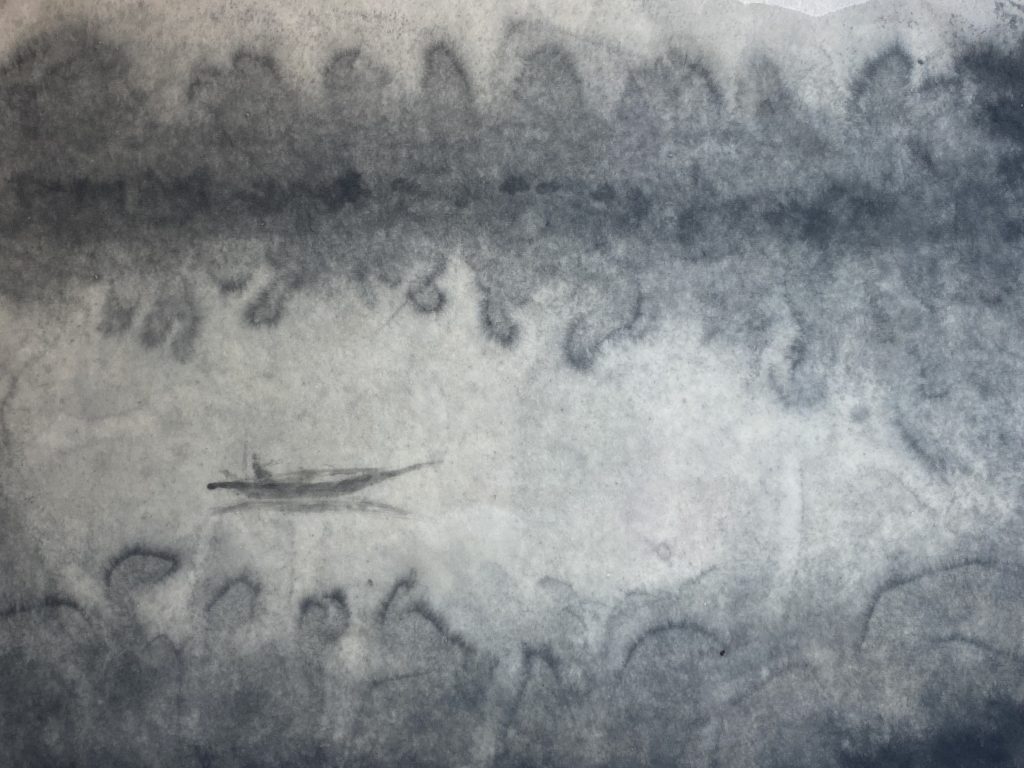Another hobby of mine… (more in here) Usually referred to as ‘sumie’ they call it suibokuga in Japan.
I joined a community class around November 2021, two days a month with a group of retirees. I was the youngest but after so many years in Japan, I finally decided to test my artistic side and do something unusual. Although I don’t have as much free time to paint, like my classmates, I can put out some works in the nick of time for the 3 annual exhibitions.
I intend to post my works in here to see for myself, if I’m actually improving.

Common Types of Paper for Sumi-e
- Washi (和紙)
- Characteristics: Traditional Japanese paper made from fibers of the gampi tree, mitsumata shrub, or paper mulberry (kozo). It is known for its strength, durability, and texture.
- Uses: Versatile for various sumi-e techniques. Absorbs ink well, allowing for deep, rich tones and delicate brush strokes.
- Examples:
- Kozo (楮): Made from mulberry fibers, it is strong and flexible. Suitable for detailed work and washes.
- Mitsumata (三椏): Softer and smoother than kozo. It has a fine texture, ideal for finer details and softer washes.
- Gampi (雁皮): Known for its glossy finish and strength. Less absorbent, which is good for sharp, precise lines.
- Xuan Paper (宣紙)
- Characteristics: Also known as Shuen paper, it is a high-quality Chinese paper made from a mix of plant fibers.
- Uses: Popular for sumi-e due to its excellent absorbency and ability to hold ink without bleeding. Ideal for both bold strokes and fine lines.
- Types:
- Raw Xuan (生宣): Highly absorbent, used for spontaneous, expressive brushwork.
- Sized Xuan (熟宣): Treated with alum to reduce absorbency, better for detailed, controlled work.
- Ganpi Paper (雁皮紙)
- Characteristics: Thin, translucent paper made from ganpi fibers. Smooth and has a slight sheen.
- Uses: Ideal for intricate work and fine lines. It does not absorb ink as quickly, allowing for more control.
- Hosho Paper (奉書紙)
- Characteristics: High-quality, thick paper traditionally used for calligraphy and printing.
- Uses: Absorbent and strong, suitable for bold brush strokes and techniques requiring deep ink saturation.
- Tengucho Paper (天狗紙)
- Characteristics: Extremely thin and lightweight, often referred to as “wings of a mayfly.”
- Uses: Excellent for layering techniques and detailed work. Requires careful handling due to its delicate nature.
- Uwaeshi Paper (上絵紙)
- Characteristics: Medium absorbency, smooth surface.
- Uses: Versatile for both detailed and bold brush strokes. Good balance of absorbency and smoothness.
- Torinoko Paper (鳥の子紙)
- Characteristics: Creamy white, smooth surface, medium thickness.
- Uses: Used for both sumi-e and calligraphy. Absorbs ink well but allows for controlled brushwork.
Uses and Considerations
- Absorbency: Papers like Raw Xuan and Kozo absorb ink quickly, which is great for spontaneous, expressive strokes but can be challenging for detailed work.
- Thickness: Thicker papers like Hosho are more durable and can handle heavy ink application and washes without warping.
- Texture: Smooth papers like Mitsumata and Ganpi allow for fine, delicate lines, while more textured papers add character to brush strokes.
- Durability: Papers made from kozo and other strong fibers are more durable and less likely to tear, making them suitable for detailed and extensive work.
Choosing the Right Paper
- For Beginners: Washi paper, especially Kozo, is a good starting point due to its balance of absorbency and durability.
- For Detailed Work: Ganpi and Mitsumata papers are excellent for intricate details and controlled brushwork.
- For Expressive Strokes: Raw Xuan and Tengucho papers are ideal for bold, expressive strokes and washes.
Selecting the right paper depends on the specific techniques and effects you wish to achieve in your sumi-e paintings. Experimenting with different types will help you understand their unique properties and how they interact with ink and brush strokes.